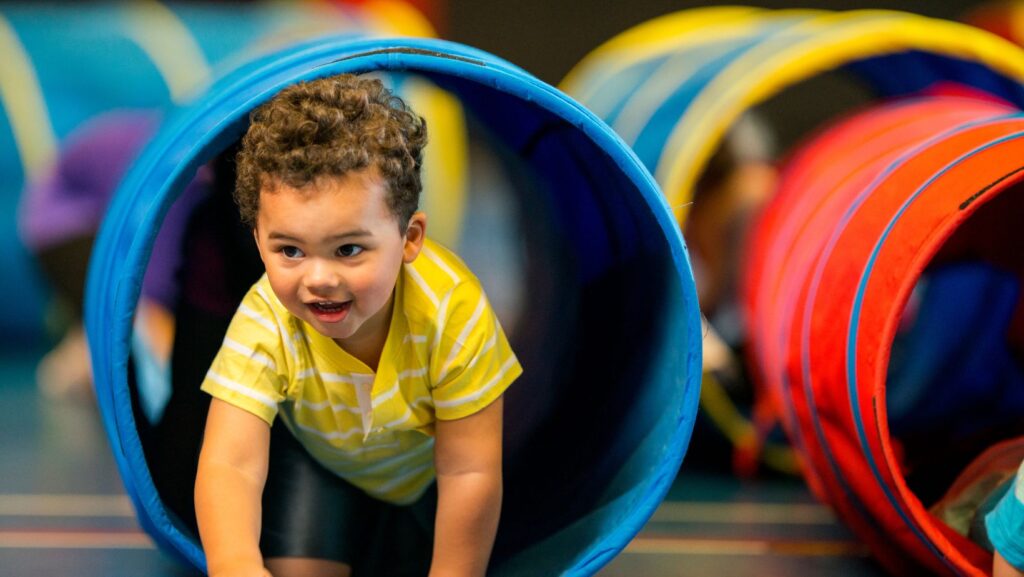Creating a safe, engaging, and fun playground is a top priority for schools, local authorities, and communities across the UK. While the swings, slides, and climbing frames often take centre stage, the surface beneath them is arguably the most crucial element for ensuring children’s safety. One of the most popular and effective safety surfaces available is bonded rubber mulch. But what is the real cost of this durable and protective surfacing from Abacus Playground?
The answer, as with many construction projects, is not a simple one-size-fits-all figure. The final cost of installing a bonded rubber mulch playground surface is influenced by a host of factors, from the size of the area to the depth required to meet critical fall height standards. However, we can break down the typical costs and variables to give you a clear and comprehensive understanding of what to expect.
The Average Cost: A Ballpark Figure
As a general guide, you can expect the cost of professionally installed bonded rubber mulch in the UK to range from £40 to £80 per square metre. For many standard projects, a price point of around £55 to £75 per square metre is a realistic estimate.

It’s important to note that while a larger playground will have a higher overall cost, the price per square metre often decreases as the area increases due to economies of scale. Conversely, for very small areas, the rate per square metre might be higher.
Deconstructing the Cost: What Are You Paying For?
The final invoice for your playground surfacing will be a culmination of several key components. Understanding these factors will help you to budget effectively and make informed decisions.
1. The Materials: Rubber Mulch and Binder
The core of the cost is, of course, the materials themselves. This includes the rubber mulch, which is typically made from recycled tyres, and the polyurethane resin binder that holds it all together.
- Colour: The colour of the mulch can significantly impact the price. Standard black rubber mulch is the most economical option as it doesn’t require an additional dyeing process. Coloured options, such as green, brown, red, or even vibrant blue, will be more expensive. These colours can be used to create engaging designs, pathways, and zones within the playground, but they will add to the material cost.
- Binder: The type of resin binder used is another important consideration. UV-stable binders are more expensive but are essential for coloured mulch, as they prevent fading and discolouration over time when exposed to sunlight. Non-UV stable binders are a cheaper alternative that can be used with black mulch where colour retention is not a primary concern.
2. The Depth: Critical Fall Height (CFH)
This is perhaps the most critical factor in determining the cost and, more importantly, the safety of your playground. The Critical Fall Height (CFH) is the maximum height from which a child could fall from a piece of play equipment. British and European safety standards (BS EN 1177) mandate that any equipment with a free-fall height of over 0.6 metres must have a safety surface certified for that specific height.
 The greater the CFH, the thicker the layer of rubber mulch required to provide adequate impact absorption. This directly affects the amount of material needed and, therefore, the cost. For example:
The greater the CFH, the thicker the layer of rubber mulch required to provide adequate impact absorption. This directly affects the amount of material needed and, therefore, the cost. For example:
- A depth of 40mm might be sufficient for a CFH of around 1.1 metres.
- For a CFH of 2.1 metres, you might require a depth of 70mm.
- For play equipment with a CFH of 3 metres or more, the depth could be as much as 135mm.
A professional installer will be able to calculate the required depth based on the specific equipment in your playground, ensuring full compliance with safety regulations.
3. Preparation of the Sub-Base
A bonded rubber mulch surface needs to be laid on a suitable sub-base. The condition of the existing ground will play a significant role in the overall cost.
- Ideal Sub-Base: If you have an existing hard, stable surface like tarmac or concrete, the preparation work will be minimal, and the costs will be lower.
- Grass or Soil: If the playground is currently grass or soil, a new sub-base will need to be constructed. This typically involves excavating the area, laying a porous membrane to prevent weed growth, and installing a layer of compacted stone. This groundwork will add a significant cost to the project.
4. Labour and Installation
The cost of labour is a major component of the final price. A professional and experienced team will ensure that the mulch and binder are mixed correctly, laid to a consistent depth, and finished to a high standard. Factors that can affect labour costs include:
- Access to the Site: Difficult access for machinery and materials can increase labour time and costs.
- Complexity of the Design: Intricate designs with multiple colours will take longer to install than a single-colour surface.
- Location: As with most services, labour costs can vary depending on your location within the UK.
Rubber Mulch vs. Other Playground Surfaces
When considering the cost, it’s helpful to compare rubber mulch to other popular playground surfacing options:
- Wet Pour Rubber: This is the smooth, seamless rubber surface often seen in public parks. It typically costs a little more than rubber mulch, often in the range of £60-£80 per square metre, and can be more expensive for complex designs.
- Loose-Fill Surfaces (Woodchip or Sand): These are often the cheapest options upfront. However, they require regular maintenance, including topping up the material to maintain the correct depth for safety, raking to keep the surface level, and removing foreign objects. These ongoing maintenance costs can add up over time, making them less cost-effective in the long run.
- Artificial Grass: This provides a natural look and is low maintenance, but it doesn’t offer the same level of impact absorption as rubber mulch or wet pour. To meet CFH requirements, it often needs to be installed over a shock pad, which increases the cost.
The Long-Term Value of Rubber Mulch
While the initial outlay for bonded rubber mulch may be higher than for some other options, its long-term value is undeniable. Its durability means it can withstand heavy use and all kinds of weather, with a lifespan of 10 years or more. The low maintenance requirements – typically just occasional sweeping and cleaning – save on ongoing costs and labour.
Furthermore, because it is made from recycled materials, it is an environmentally friendly choice that helps to divert waste from landfills.
Conclusion: An Investment in Safety and Fun
Choosing the right surface for a playground is a significant decision. While the cost is a key consideration, it should be balanced against the long-term benefits of safety, durability, and low maintenance. Bonded rubber mulch offers an excellent balance of all these factors.
By understanding the variables that influence the cost, you can plan your project effectively and create a safe, vibrant, and long-lasting play environment that will be enjoyed by children for many years to come. Always ensure you work with a reputable and experienced installer who can provide a detailed, transparent quote and guarantee that your new playground surface meets all the necessary safety standards.
